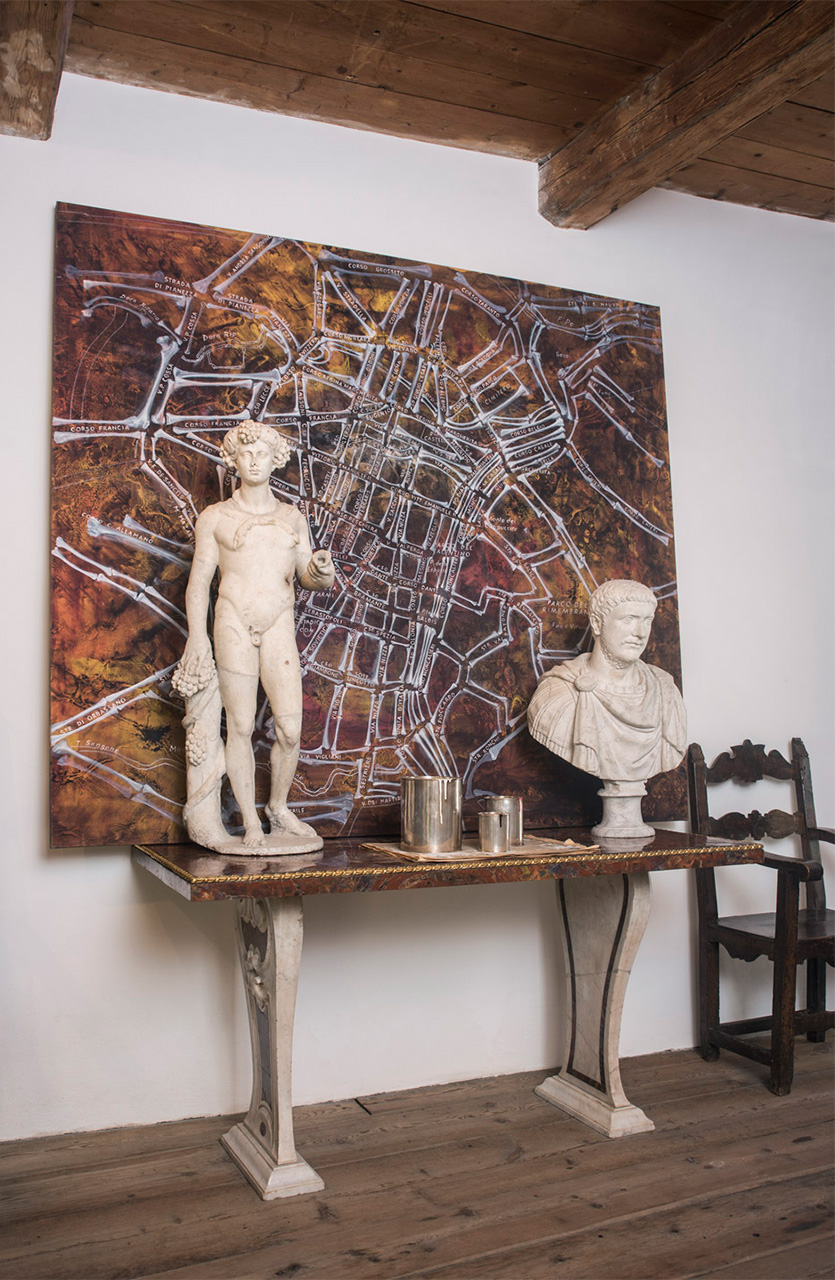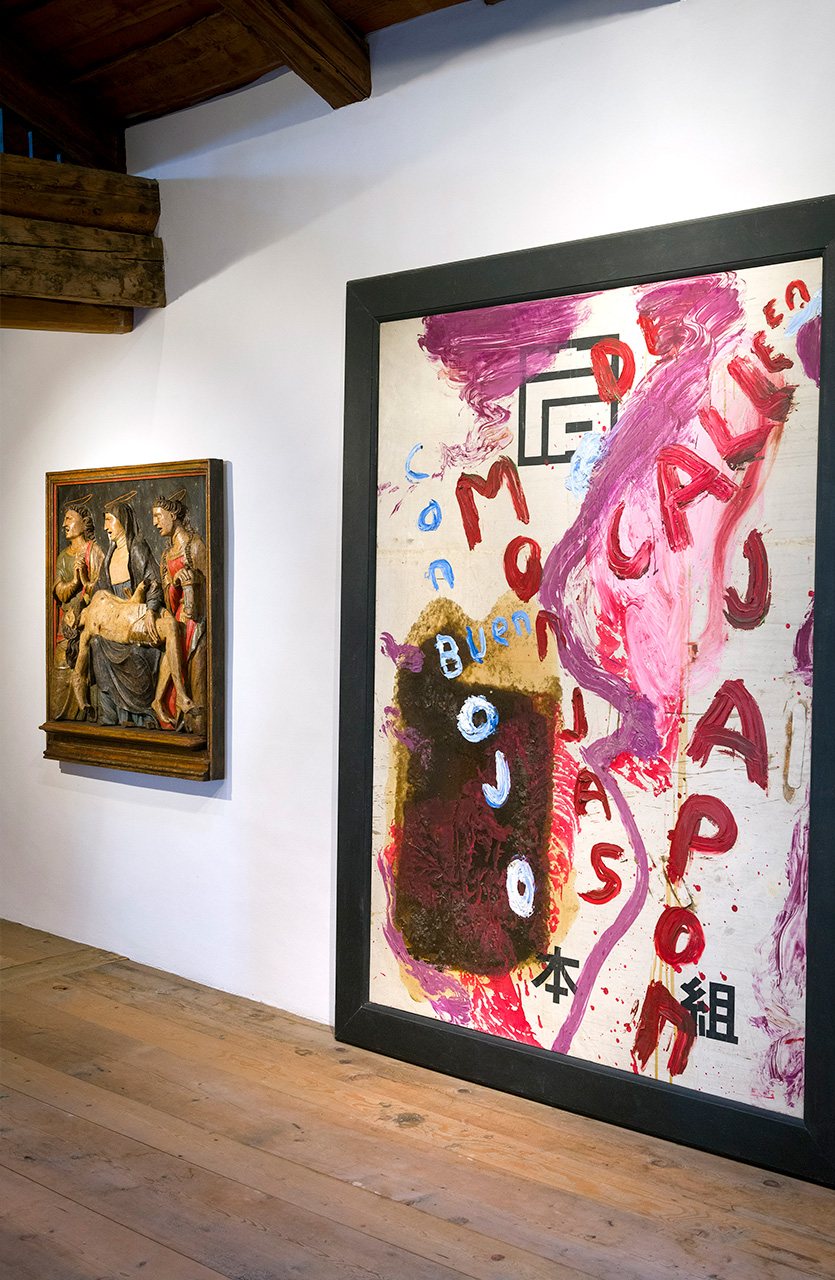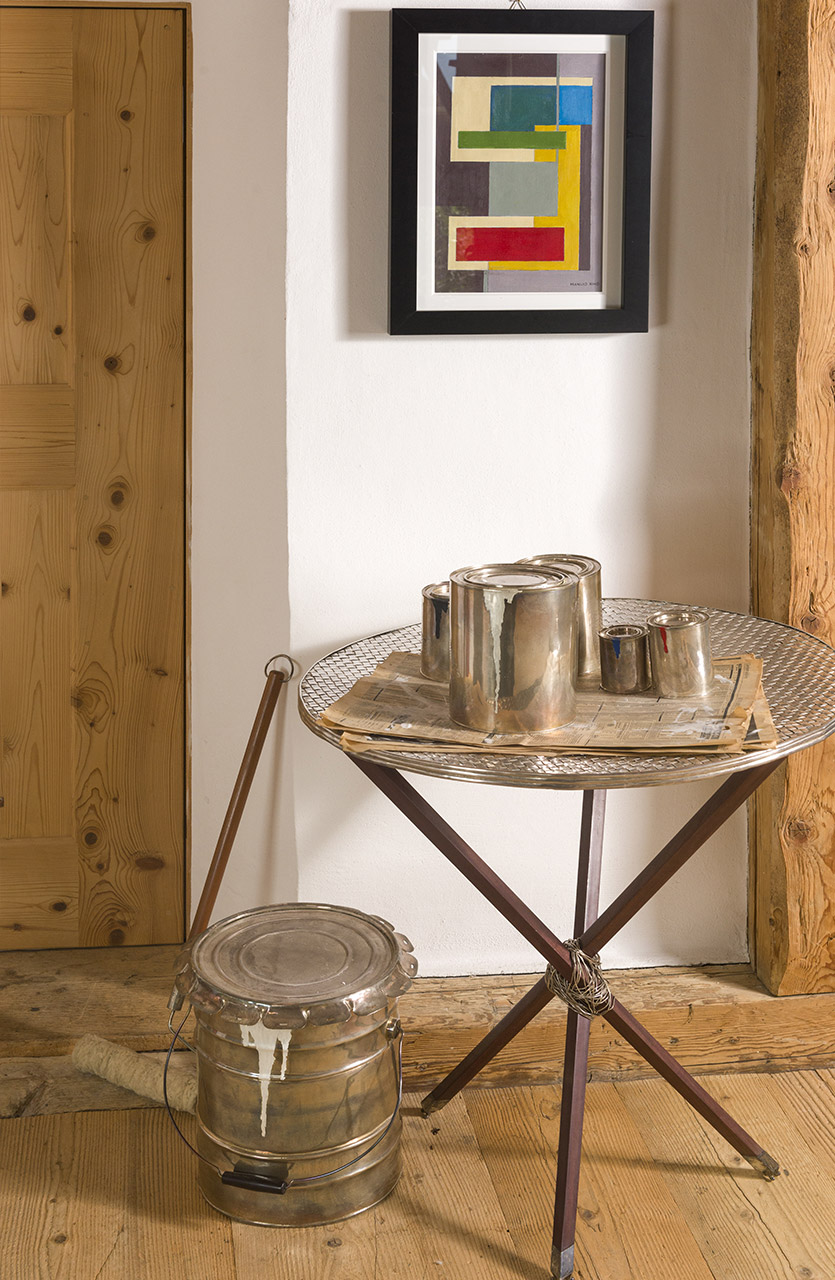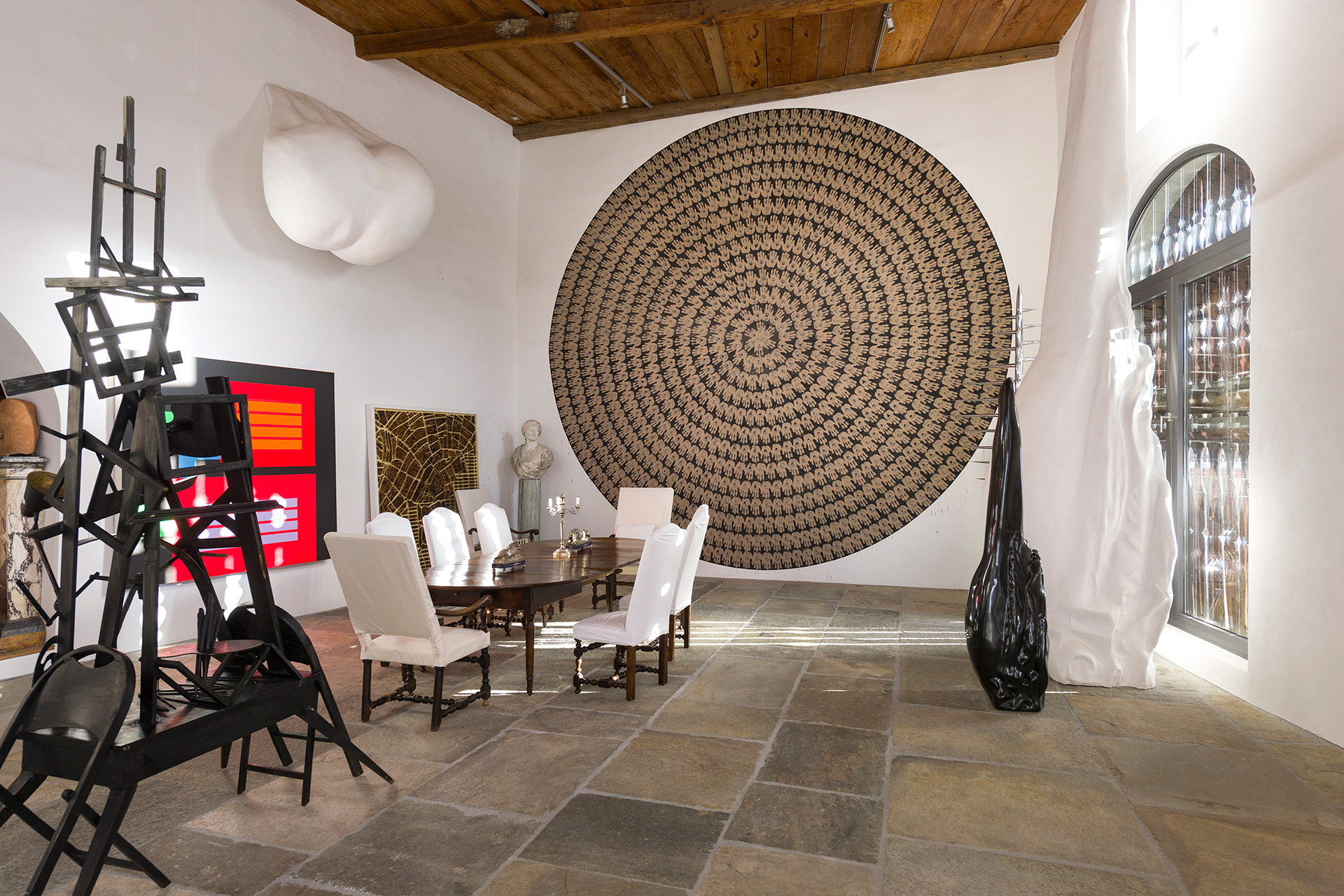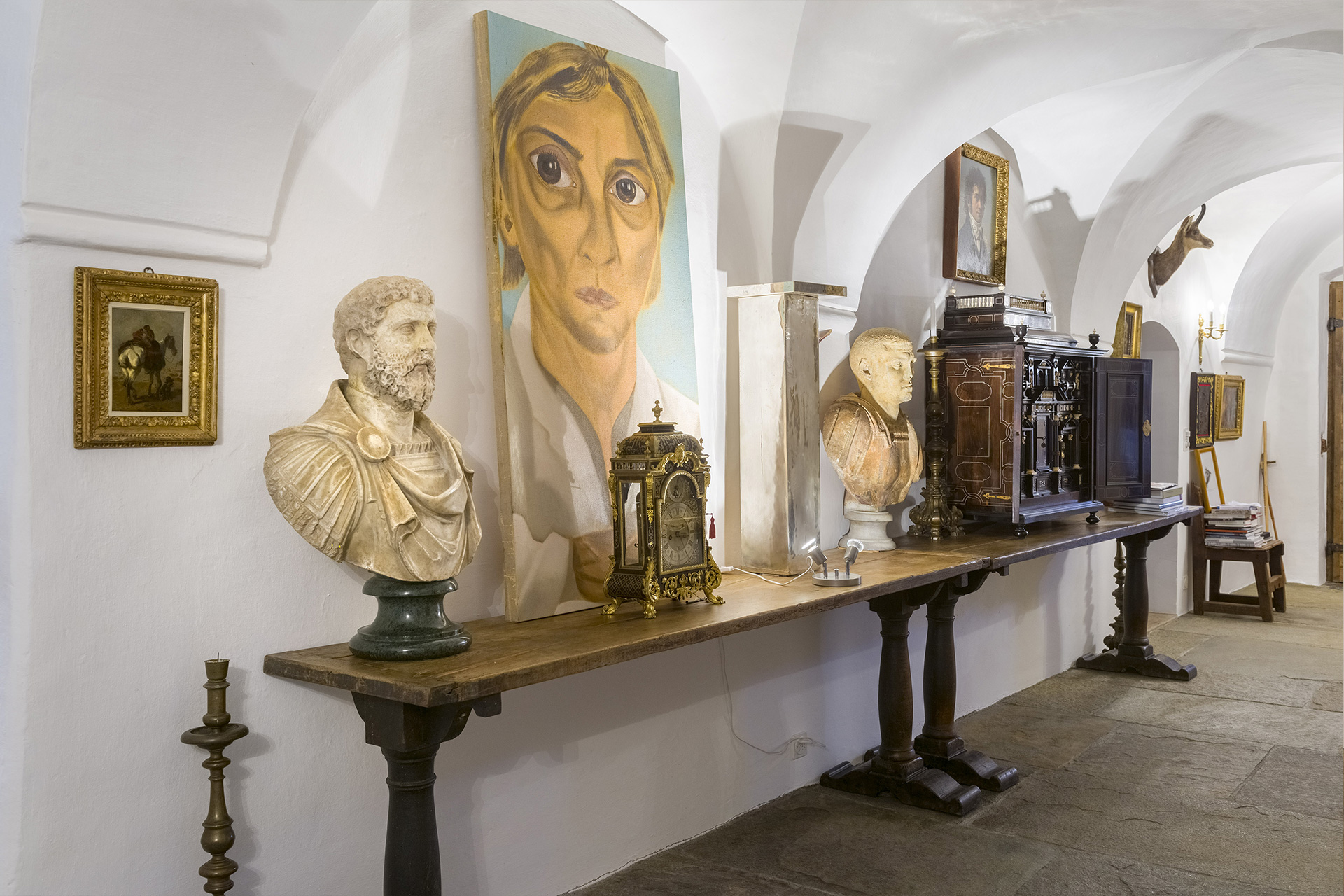Respect for History:
Gian Enzo Sperone, the "Universal Collector".
Ecce Sperone
In the centre of Turin in 1888, almost foreseeing that many years later Gian Enzo Sperone would open his gallery right there opposite, Friedrich Nietzsche wrote Ecce Homo, which is simply a shrill, desperate, autobiographical consideration. One of the chapters of the book is entitled “Untimely meditations” which is exactly what Sperone has been doing all his life; sometimes – often, in fact – finding himself to be untimely in advance, on other occasions insisting on being untimely as a matter of principle. Sperone has never tried to be, as the saying goes, “at the right point on the creative curve”, precise, topical, sure of not running any risks. Always before or after, not by mistake but deliberately. Another book comes to mind as well though – “Kéraban the Inflexible”, written by Jules Verne in 1883, five years before Nietzsche’s work.
The starting point for the story is comical: the Ottoman government has just imposed a paltry tax (10 para – roughly the cost of half a cup of coffee) on the boats that travel up the Bosporus from Constantinople to Scutari. Kéraban is a rich tobacco merchant who finds this new tax nonsensical and refuses to pay it. He’d rather make the long journey all around the edge of the Black Sea – a trip that will obviously cost him far more than the tax itself, but that doesn’t matter.
The important thing is the satisfaction of not bending to the ridiculous demands of the government. Gian Enzo Sperone is a contemporary Kéraban who, rather than meeting the crazy rules of an art world that’s often insane and irrational, is willing to make long journeys – both real and mental – to get where he wants, how he wants, and not how the others want. Gallery owner and collector at one and the same time: as so often happens, Sperone views himself in the mirror of art. Sometimes the reflected image is that of the collector, sometimes that of the gallery owner, and it’s in this alternation or swapping of roles that he’s built up his collection.
Stubborn like the man who put it together.
An extremely long journey starting from antiquity and arriving at contemporary, but also contemporarily.
For Sperone, the time that passes between one work and the next is as insignificant as the rules that govern the world of art. What counts is that people can understand the conversation taking place between the various works of art that, like the stages of a journey, together form the story. It’s hard to say who’s the most stubborn – Sperone the collector or Sperone the gallery owner. Neither of them sees the artists and their art as elements separated from their biography. The work of art and its creator are important for Sperone in that they’re elements which coincide with or reflect his own way of thinking about and understanding the world we live in. For Sperone, art is something made by one person for other people, not for an abstract reality.
His obstinacy is his own personal way of remembering that. If people come into conflict then their art becomes a part of the conflict as well. You can’t love a work of art if you hate the person who made it, or if that person hates you. That’s why Sperone is willing to forgo a work or circumnavigate the entire world of art to avoid an absurd relationship with an artist.
Being stubborn isn’t simple but it’s irresistible and, more than anything else, it’s important because, in a world compromised by compromises, stubbornness is the only thing that lets you reveal your identity – a quality that’s crucial and clear in the unyielding but irreplaceable figure of someone like Gian Enzo Sperone.
Francesco Bonami
